Triumph Street Twin Review – Launch Test
By Trevor Hedge
Triumph’s Bonneville range just scored it’s biggest revamp yet. In 2005 the hugely successful model range grew in capacity from 790cc to 865cc, then scored EFI in 2009.
For 2016 the Bonneville range gets virtually new everything; a larger 900cc liquid-cooled engine for the Street Twin, new frames and a healthy dose of technology which includes traction control and ABS as standard across the range.
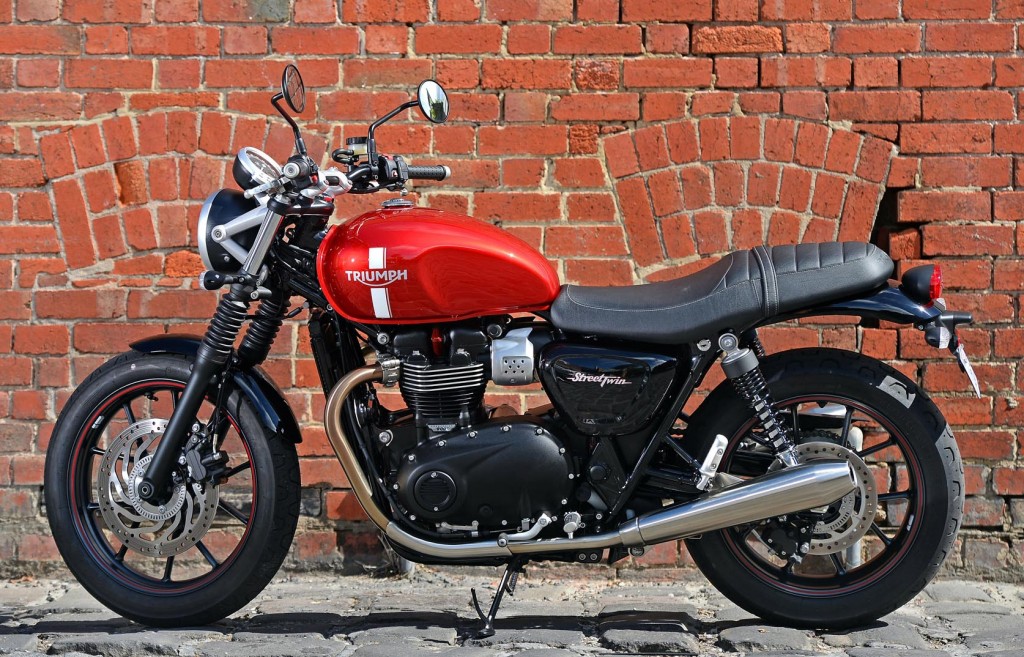
The first of the 2016 Bonneville family to lob Down Under is the Street Twin. At $13,350 it offers plenty of quite stylish bang for the buck. And despite the massive upgrades and new age technology, it looks more authentic than ever.
MCNews.com.au was recently lucky enough to spend a full day on the Street Twin, in both the city and the ranges.
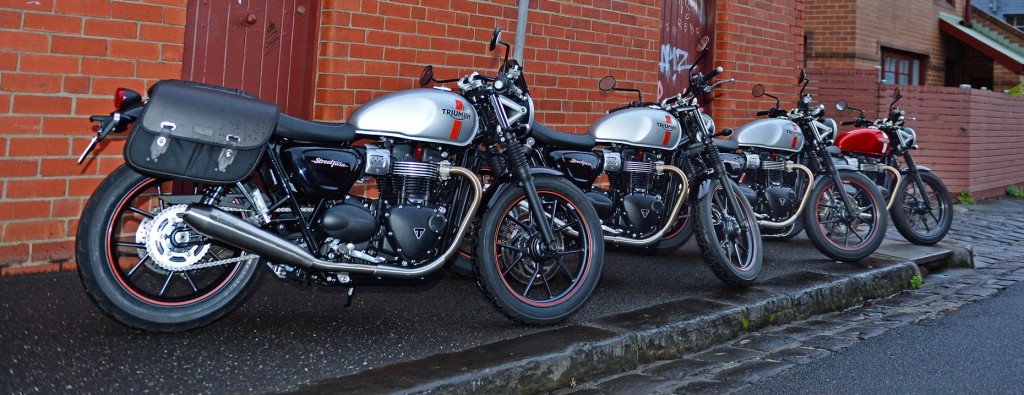
Around Melbourne the torquier new engine made light work out of the cut and thrust of morning city traffic. A reasonable amount of steering lock, a light clutch, good low end torque and a reasonable amount of crank weight combine with fairly long first and second gears to make the Street Twin a great option for the city commute.
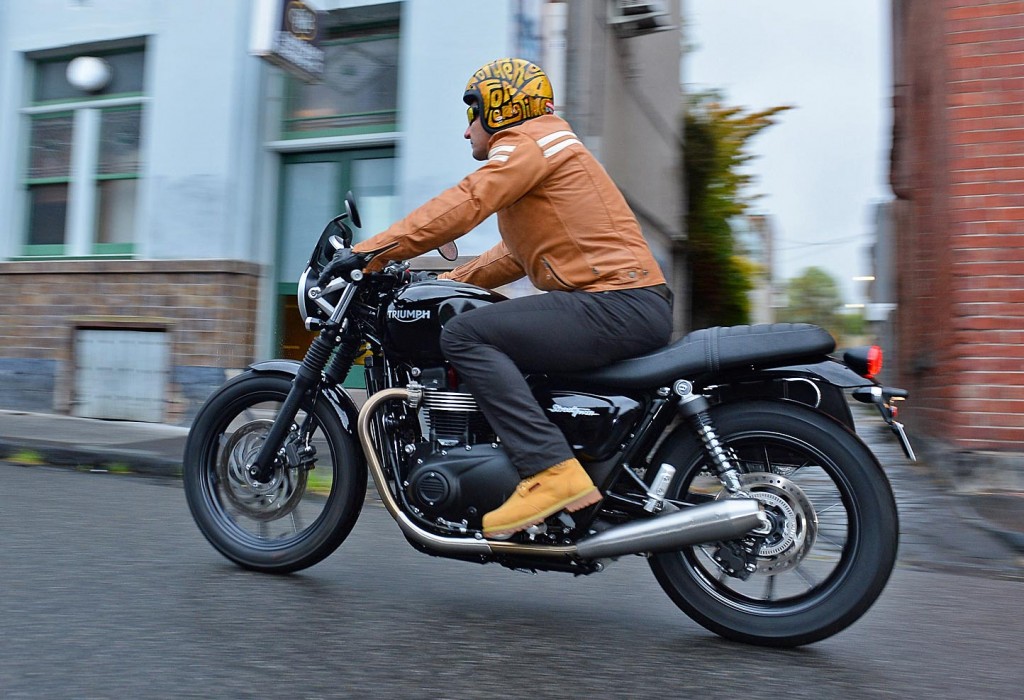
The new 270-degree parallel-twin engine is water-cooled and adopts a ride-by-wire throttle. These changes, along with a myriad of others, were necessitated by the move to Euro 4 emissions legislations across much of the globe.
Triumph claim that fuel efficiency is improved by a massive 36 per cent. Offsetting the benefits of that change is a reduction in fuel capacity from the previous model’s 16-litres down to 12-litres in the new Street Twin. Still, the Street Twin is capable of a 250km range even in fang mode. I imagine a commuter may exceed 300km between fills.
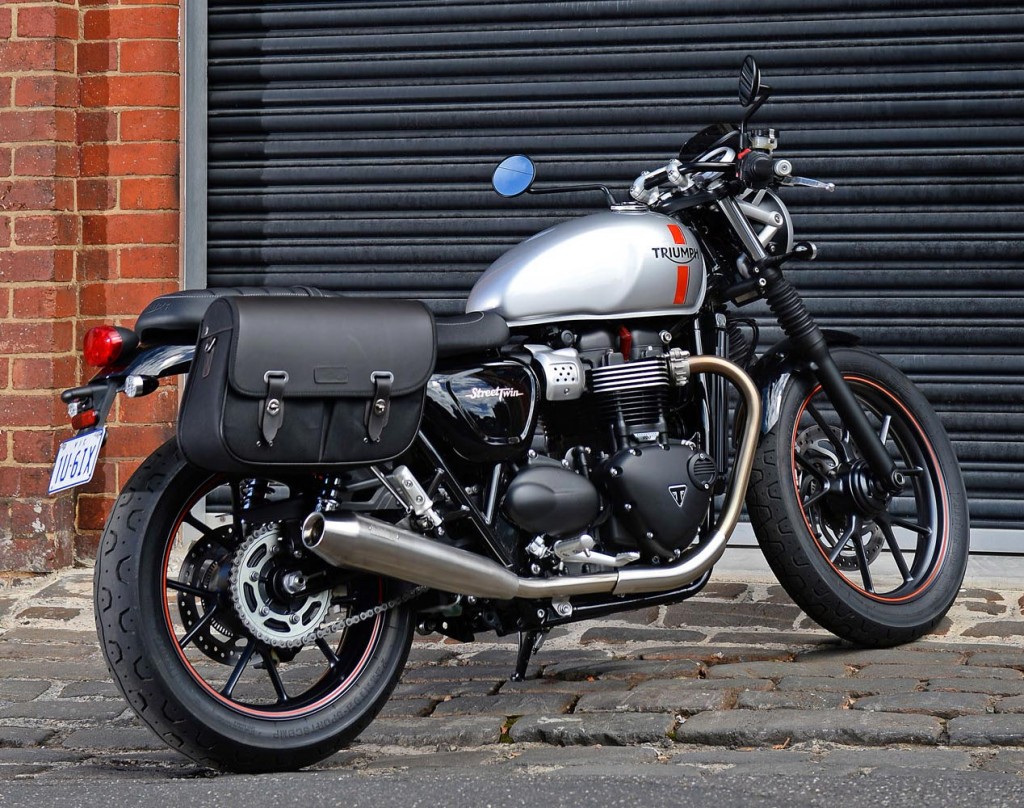
Helping with the overall economy of Street Twin ownership is that service intervals are now out to 16,000km, and with only a single throttle body and a single-overhead-cam those services should be very cheap indeed. Even though the Street Twin does have a fairly handy 3.8-litre oil capacity, which has certainly been designed to allow the machine to go so long between changes, no sympathetic owner would let a machine go 16,000km between oil changes. I would certainly recommend owners to do an interim oil/filter change themselves between those official dealer service intervals. Doing this easy task yourself will also allow you to get to know your steed that little bit better.
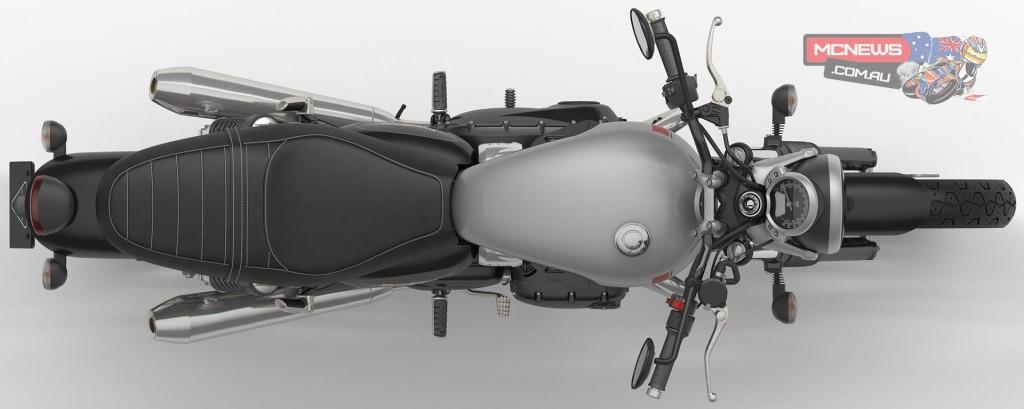
Once out of the city I started to feel that the steering was a little ponderous so at the first stop point I asked the accompanying Triumph technician to dig out his tyre pressure gauge. My suspicions of under-inflation affecting the 100/90-18 front tyre were confirmed, a gas cartridge upped the pressure from 30psi to 35psi, instantly transforming the steering of the Street Twin.
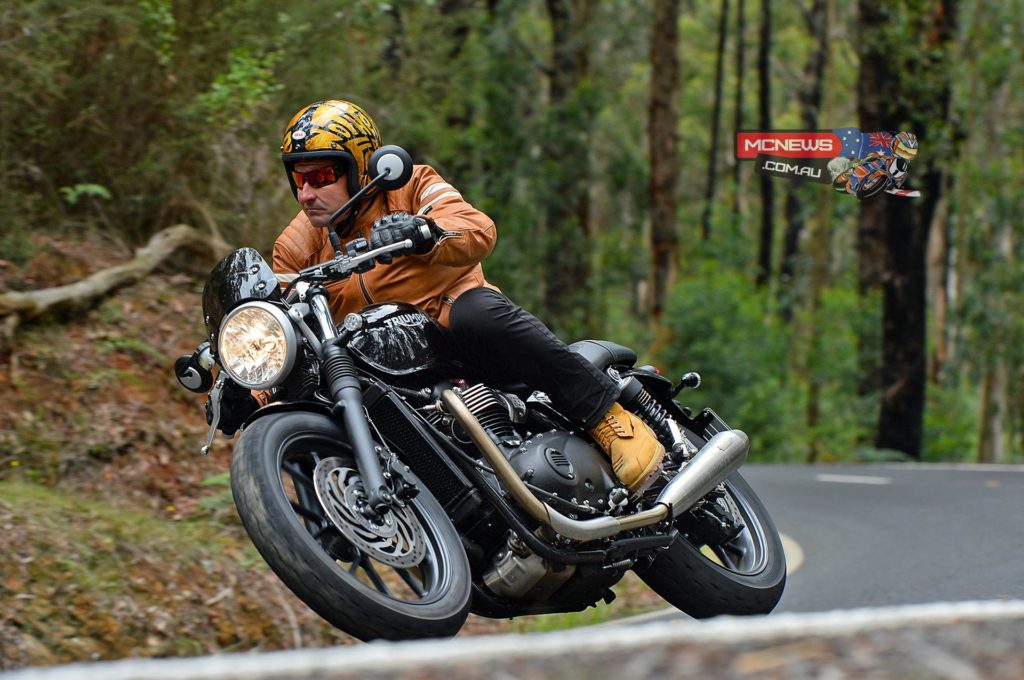
At the same time I upped the preload on the twin rear shocks which made the Street Twin a lot more composed over bumps and more settled on change of direction. Kayaba also make the 41mm forks, complete with period style fork gaiters, but the forks offer no adjustment. I am currently around 90kg and once the rear was firmed up, both ends then did a pretty good job of keeping the Street Twin composed.
I did feel a couple of hits over sharp bumps but they never turned into serious kidney punchers. Stiffening the rear also, predictably, vastly improved the front end, with the rear more composed it did not transmit complaints through to the headstock, which before, when the shocks had minimal preload, the suspension when pressed had a tendency to put a wriggle through the machine that was felt at the bars.
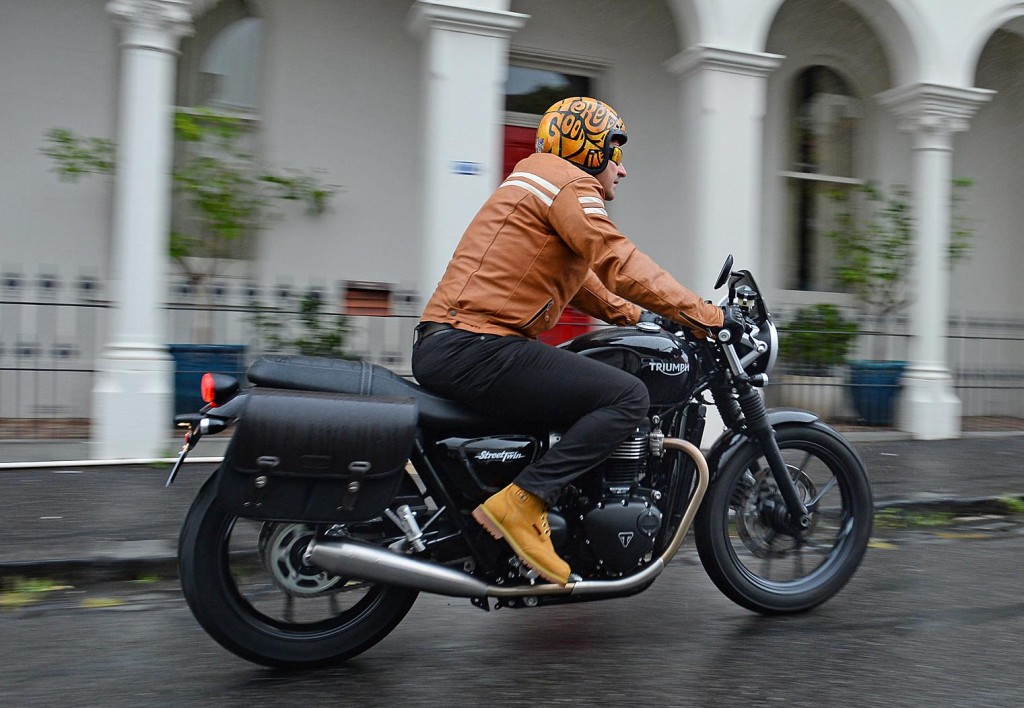
The Street Twin was great fun in the hills above Melbourne. Ground clearance proved very good and while playing in the bends third gear was fine for everything from 40km/h to 140km/h, if you wanted to ignore the gearbox and just concentrate on your lines. Second gear was rarely called upon, but certainly a shift to fourth above 110km/h paid dividends as it got you back into the meatiest part of the torque curve.
The engine will rev past 8000rpm if you want it to but best progress comes by keeping the machine between 3000 and 6000rpm. The tallest of the five ratios is a genuine over-drive style gear that sees the Street Twin loping along at 100km/h, fifth is for highway cruising only. Of course with 17-teeth on the front sprocket and 41 on the rear there is lots of scope to shorten the overall gearing, if you like, but I think that standard ratio feels about right in this style of machine. The clutch is light and the gearbox works well.
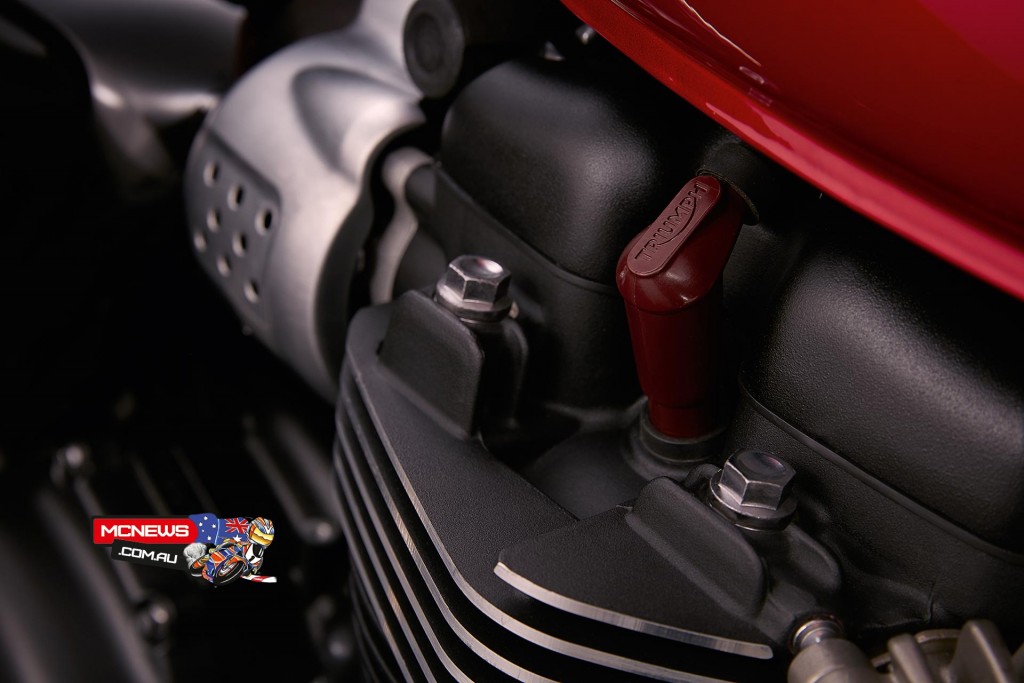
Power delivery is fairly linear but the twin sounds reasonable enough to make you want to explore the upper reaches. The official peak figures are 55hp at 5900rpm and 80Nm of torque at 3230rpm. It’s never going to rip your arms off but does offer a pleasing lilt to its character, while the low and mid-range torque is certainly strong enough to provide fairly rapid progress.
The engine is certainly a lot more powerful than that found in Harley’s 883 Sportster, that difference accentuated by the fact that the Street Twin has 50kg less to propel than Harley’s Sportster.
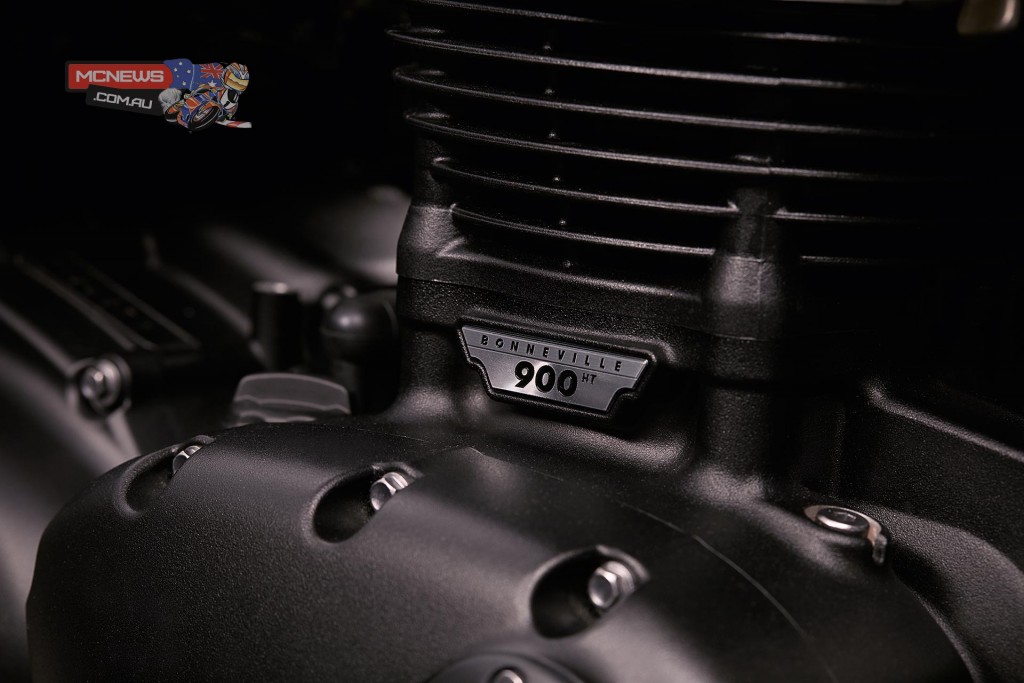
Like many machines of this ilk the front tyre wears further to the edge than the rear. Our strops through the ranges quickly wore off any semblance of a chicken strip up front, but the 150/70R17 rear Pirelli Phantom had quite a few millimetres remaining to be used. These tyres worked well during our wet morning in the CBD and also stuck well while having a serious crack in the dry up in the hills.
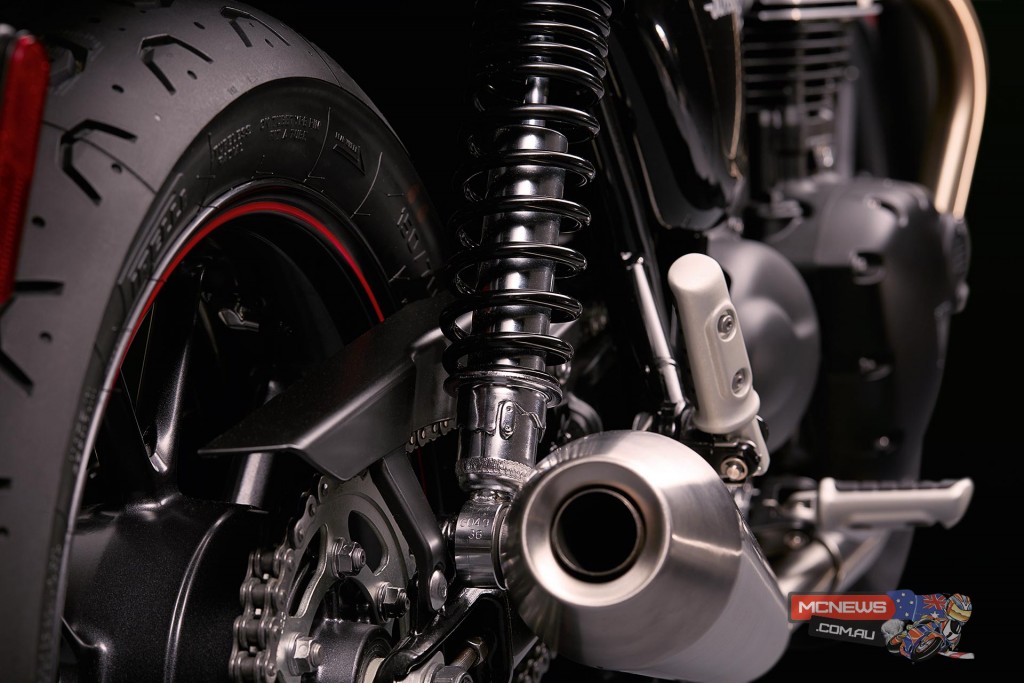
There is no tachometer fitted but otherwise the instrumentation is full featured with gear position indicator, fuel level, range to empty, average and current fuel consumption, clock, tripmeters along with the functionality for indicating the functions of the optional heated grips or tyre pressure monitoring system. All functions, including the facility of turning the traction control off (while at a standstill), are cycled through via an ‘i’ button on the left handlebar.
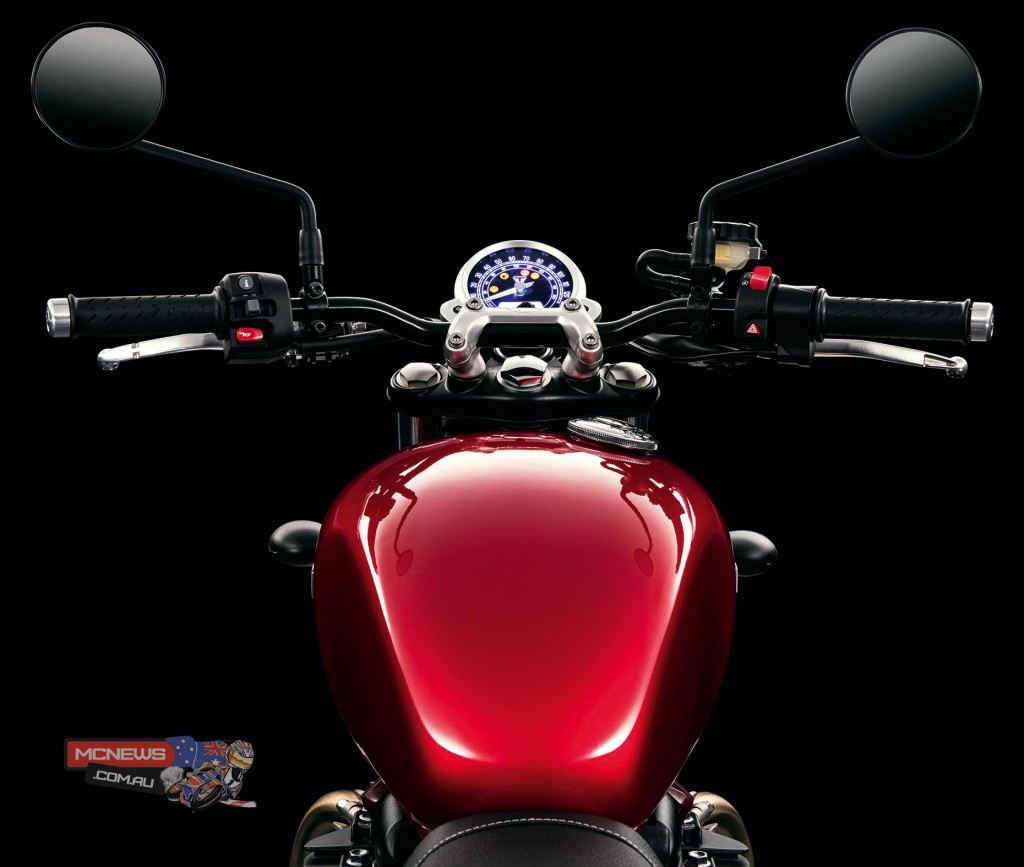
I did manage to purposefully break the rear end loose a few times on damp tarmac to gauge the effectiveness of the traction control system and was glad to find that it worked quite well. I even managed to get the rear to break traction on a hard shift to second gear, the system caught it smartly, and was reasonably quick to restore full drive when traction was regained.
Likewise the ABS system worked well and was even responsive enough to be of use in some gravel braking tests I tried.
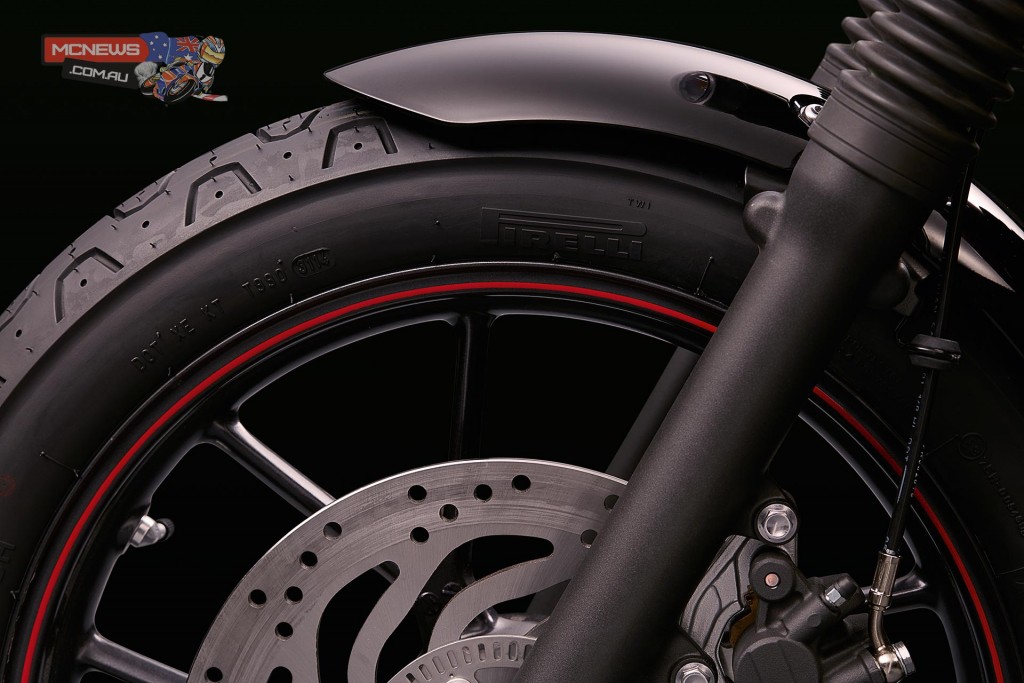
A single 310mm disc is fitted up front with assistance from a 255mm disc at the rear, both clamped by Nissin two-piston floating calipers. Triumph claim the Street Twin tips the scales at a very reasonable, for this style of machine, 198kg. That latter number has allowed Triumph to get away with that single disc fitment up front as the braking performance is better than you might expect.
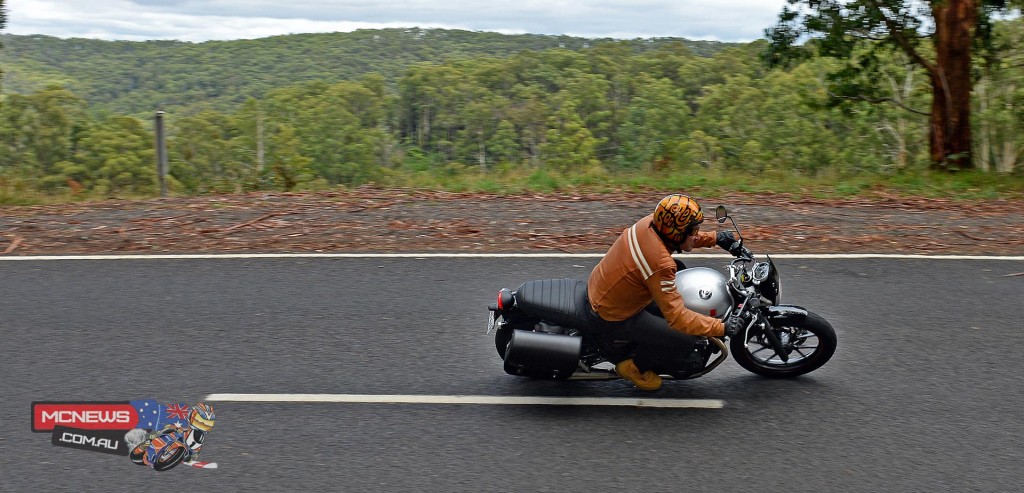
Certainly any more braking performance would then necessitate stiffer fork springs etc. but then you would be better off starting with something sportier to start with. And there certainly are sportier options in the new five-model 2016 Bonneville family line-up, with the sexy new Thruxton R topping a five-model range that also includes a standard Thruxton, a new T120 and T120 Black, all of those four variants will be priced higher than the Street Twin and all score larger 1200cc engines.
Thus at $13,350 the Street Twin is the new entry level Triumph retro machine. And for that entry level to boast ABS, traction control, and a few other little niceties such as a standard USB charging socket and engine immobiliser, then that is a fairly well specified machine to be considered as ‘bottom of the range’.
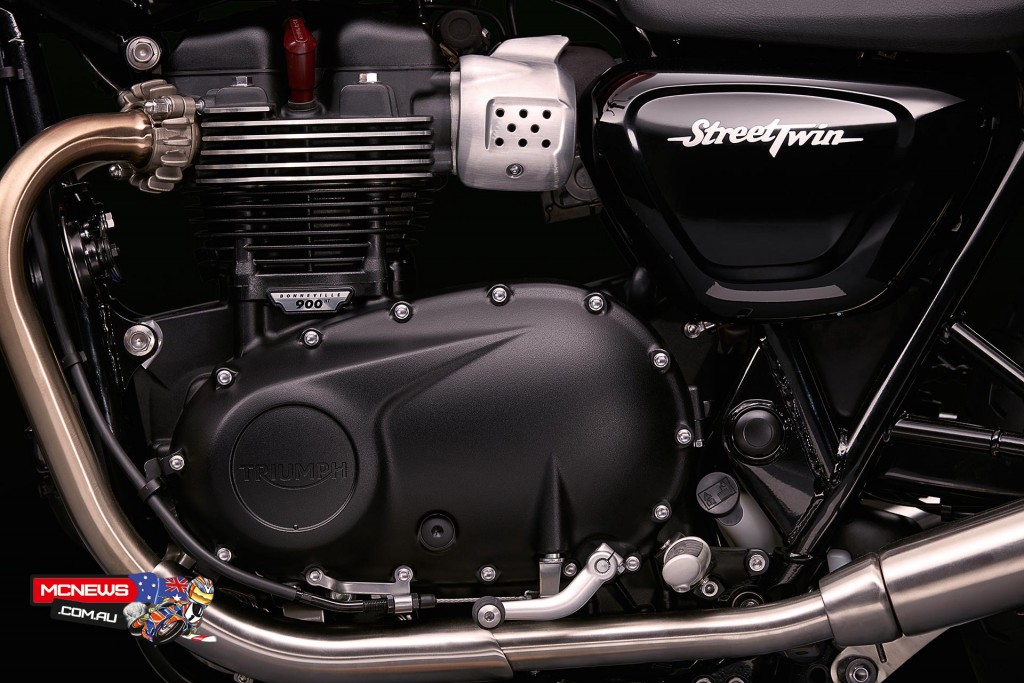
The Street Twin, though, feels anything but a bottom of the range motorcycle. The machine sports a retro look that really does look quite authentic, a sound from the standard twin mufflers that is quite agreeable, and of course, the most important factor is that the Street Twin provides a riding experience that, both in the city and the hills, was nothing less than great fun at all times.
Street Twin also seems quite well finished, despite a right royal flogging by the assembled press corps no problems become apparent. It is built in Thailand, as quite a few Triumph models have been for many years, but I would say the Q/A checks and balances are now truly up to speed and the Street Twin comes across as a quality product. It certainly seems much nicer finished than previous Bonneville machines I have sampled.
Of course, personalisation is everything to some in this segment of the market and Triumph have also put together three accessory packs they call ‘Inspiration Kits’.
There are also around 150 individual accessories if you want to come up with your own interpretations from the Street Twin base.

Inspiration Kit #1 – Scrambler – $3132 + Fitting
- Brushed high-level Vance & Hines Exhaust (This is a fully system and it is very loud!)
- Rear mudguard removal kit with compact rear light
- Brown ribbed bench seat
- Brown ‘barrel style’ handlebar grips
- Compact LED indicators
- Brushed aluminium sump guard
- $3123 + Fitting
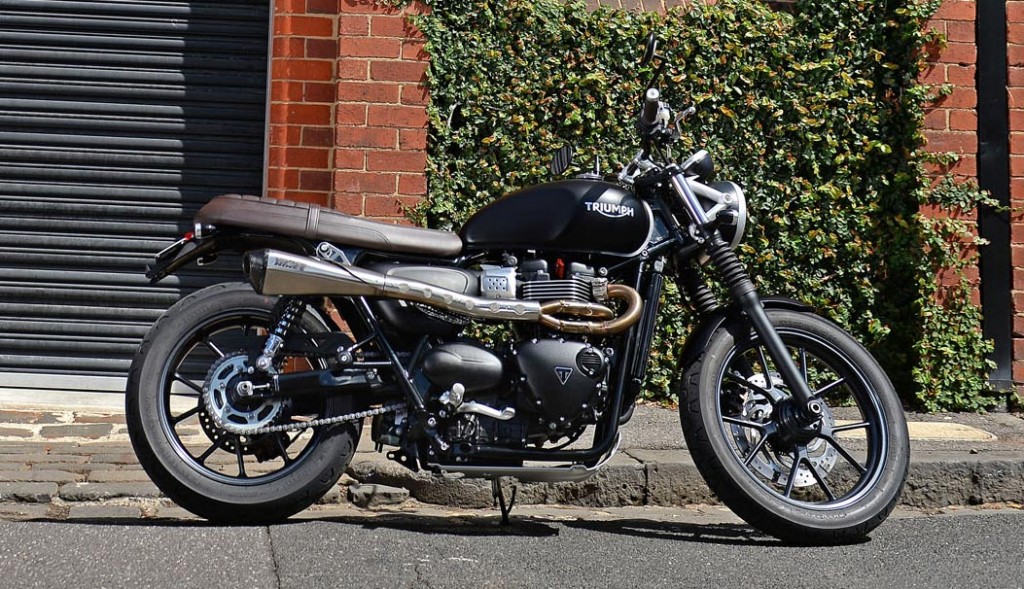
Inspiration Kit #2 – Brat Tracker – $2228 + Fitting
- Brushed Vance & Hines slip-on silencers
- Rear mudguard removal kit with compact rear light
- Black ribbed bench seat
- Compact LED indicators
- Black ‘barrel style’ handlebar grips
- Brushed sump guard
- $2228 + Fitting
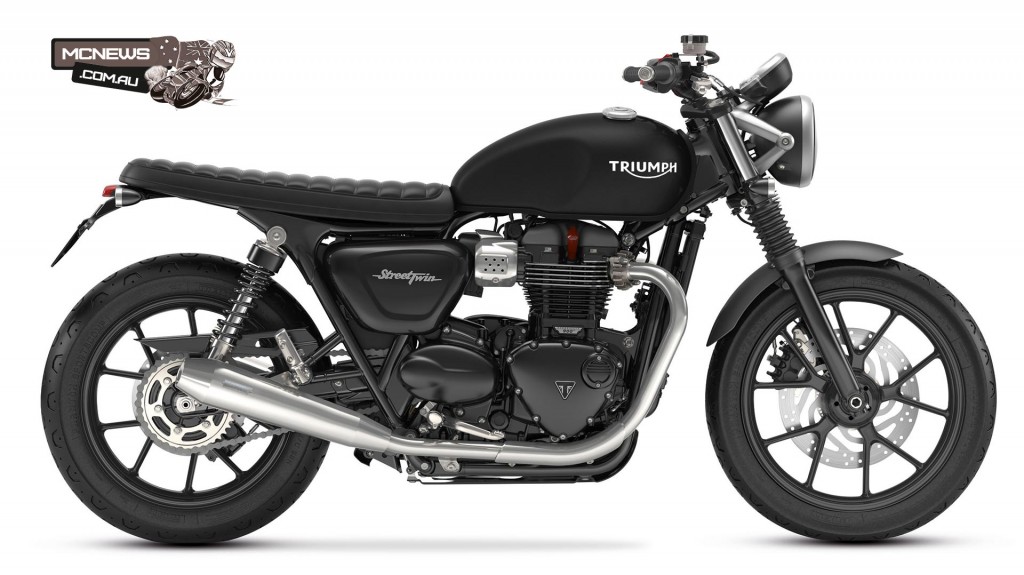
Inspiration Kit #3 – Urban – $1986 + Fitting
- Brushed stainless Vance & Hines slip-on silencers
- Waxed cotton pannier RHS
- Ace Bars
- Dark Tinted Summer Screen
- Flyscreen Mounting Kit
- Compact LED indicators
- $1986 + Fitting
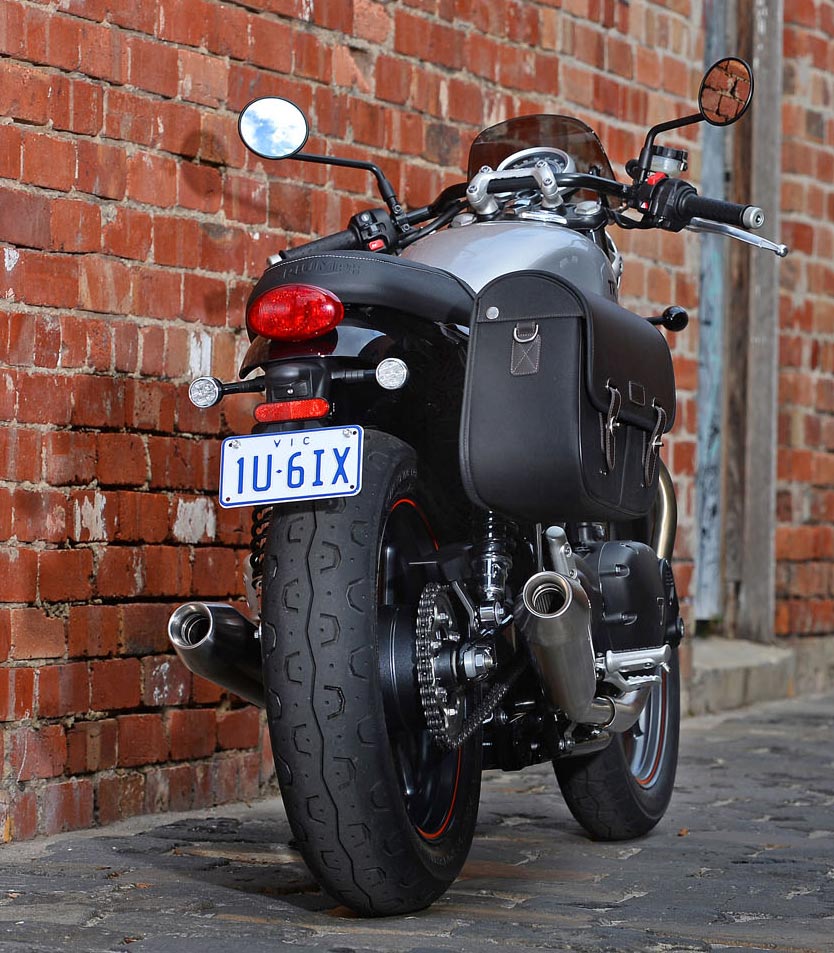
For my money the ‘Urban’ kit is the winner. The added amenity of the single soft pannier, that strangely manages not to look too out of place despite only being fitted to the one side, while the sportier ‘Ace Bars’ make hustling the Street Twin all that more rewarding. The soft bag adds an almost World War Two style appeal to the Street Twin that I find quite alluring. That it’s also the cheapest of the kits is the icing on the cake.
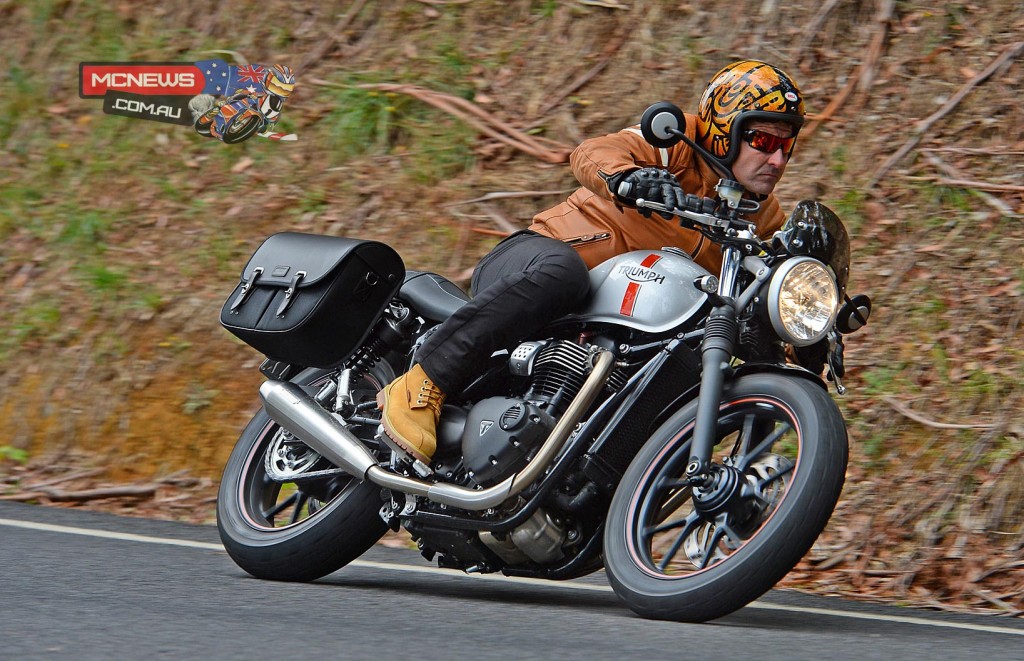
The full system on the ‘Scrambler’ kit features lovely headers and adds a massive amount of bark to the Street Twin, but as much as I love the look of the headers, the sound out of the muffler is borderline offensive, it would certainly upset the neighbours if you are a city dweller.
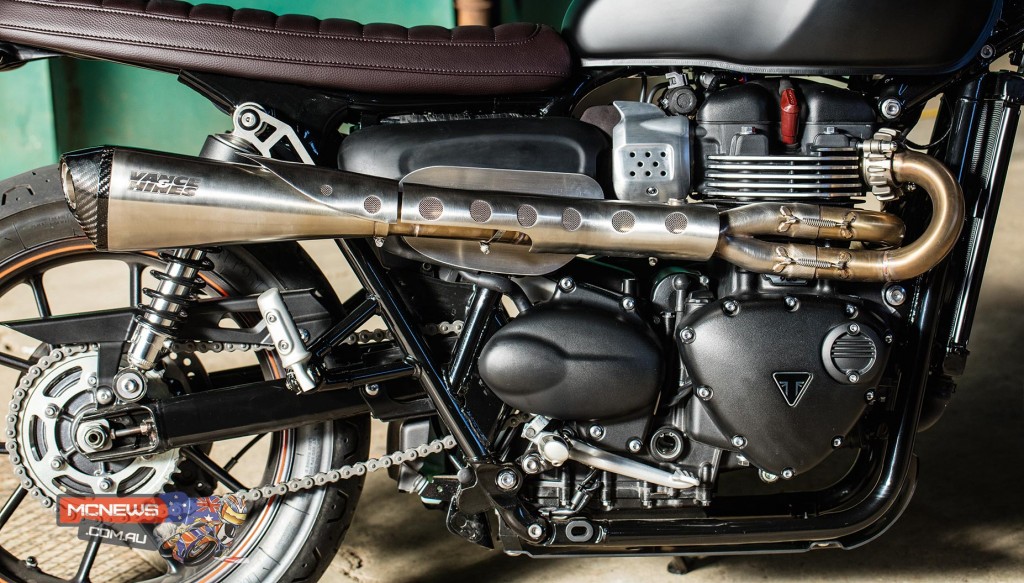
The ‘Brat Tracker’ kit is essentially the same as the ‘Scrambler’, except the seat and grips are black rather than brown, and instead of the full high-mount exhaust it instead features Vance & Hines slip on silencers, the same as the ‘Urban’.

Of course adding one of these kits, can quickly turn that real $13,350 value buy into a much more expensive proposition. The base bike is certainly enjoyable enough but there is no doubt the various accessory packages add a little more flavour to the recipe, but the standard Street Twin is already a pretty tasty dish.
The ergonomics feel quite natural, the seat is reasonable enough for day rides, while the 750mm seat height and slim girth makes it very suitable for shorter folk, but the riding position also allows for long legs without getting cramped.
The 2016 Triumph Street Twin is in Australian showrooms now. The T120 variants are due around the middle of March and will be priced at 17k+, the Thruxton and Thruxton R will be priced from $18,700+ and $21,100+ respectively.
Triumph Street Twin Specifications
- Engine; 900cc, Liquid-cooled, 8-valve, SOHC, 270-degree, parallel twin
- Bore x Stroke; 84.6x80mm
- Compression Ratio; 10.55:1
- Power; 55hp at 5900rpm
- Torque; 80Nm at 3230rpm
- Induction; Single throttle body, multipoint sequential fuel injection
- Exhaust; 2-into-2
- Clutch; Wet, multi-plate with cam-assist
- Transmission; 5-speed, chain final drive, 41/17
- Frame; Tubular steel cradle and tubular swingarm
- Rims; 18×2.75″ (F); 17×4.25″ (R)
- Tyres; 100/90-19 (F); 150/70R17 (R)
- Forks; Kayaba 41mm, 120mm travel, no adjustment
- Shocks; Kayaba twin shocks, 120mm travel, adjustable preload
- Brakes; ABS, Single 310mm disc and Nissin two-piston caliper (F); Single 255mm disc (R)
- L x W x H; 2090 x 785 x 1114mm
- Seat Height; 750mm
- Wheelbase; 1439mm
- Rake x Trail; 25.1-degrees/102.4mm
- Dry Weight; 198kg
- Fuel Capacity; 12 litres
- RRP; $13,350 plus on road costs
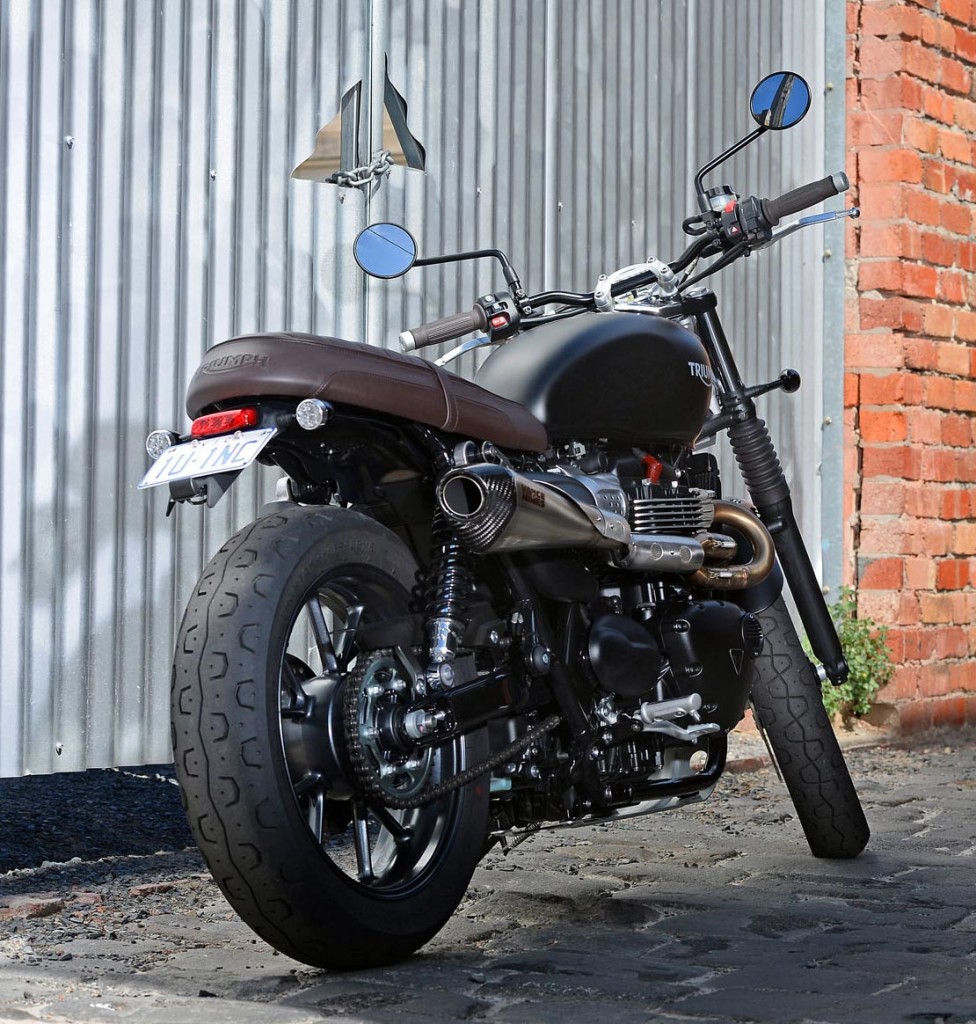
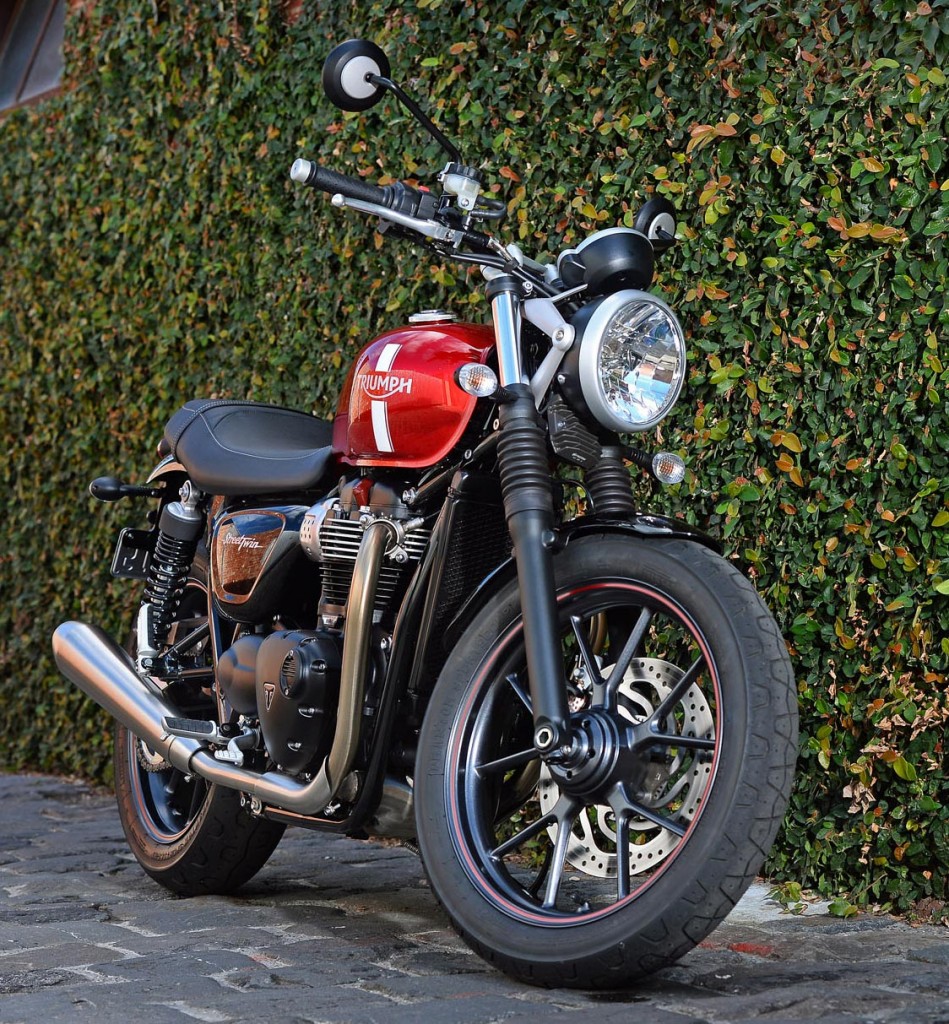

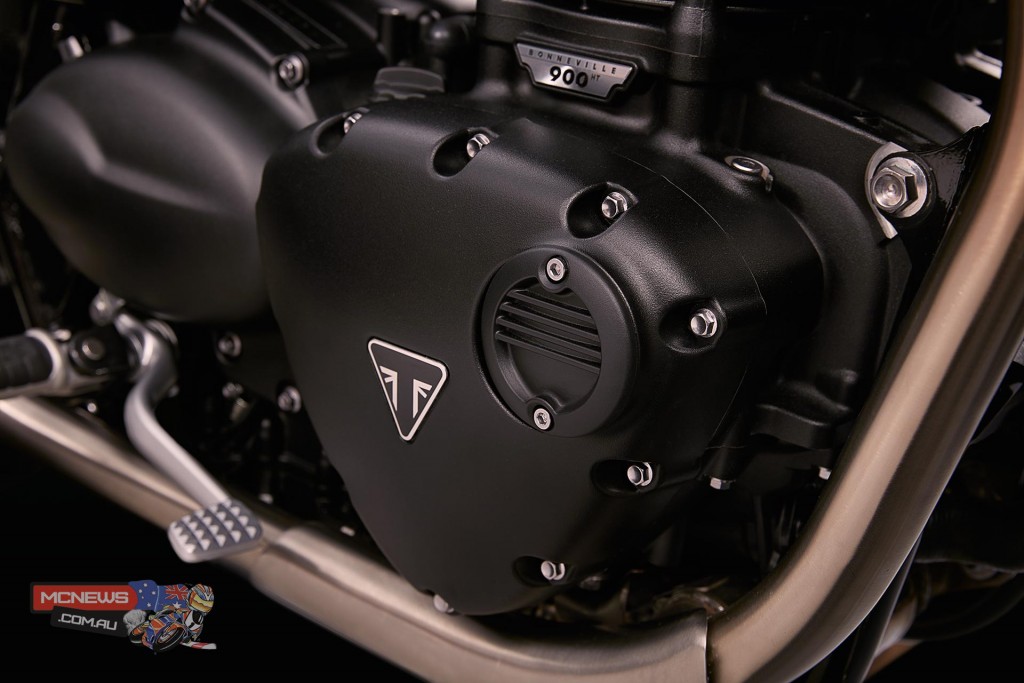
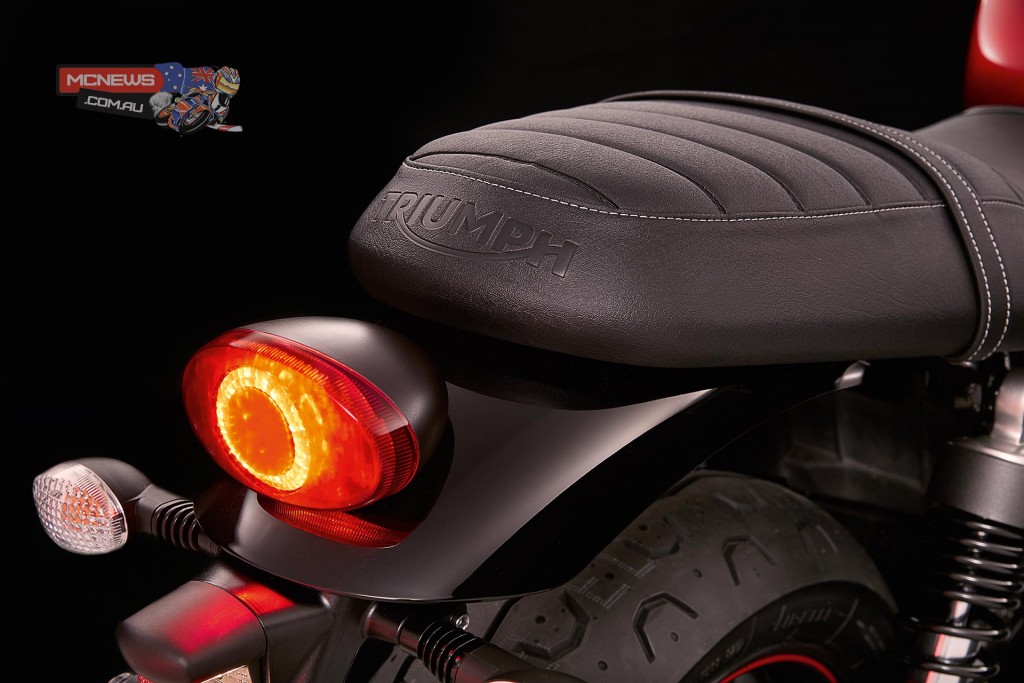
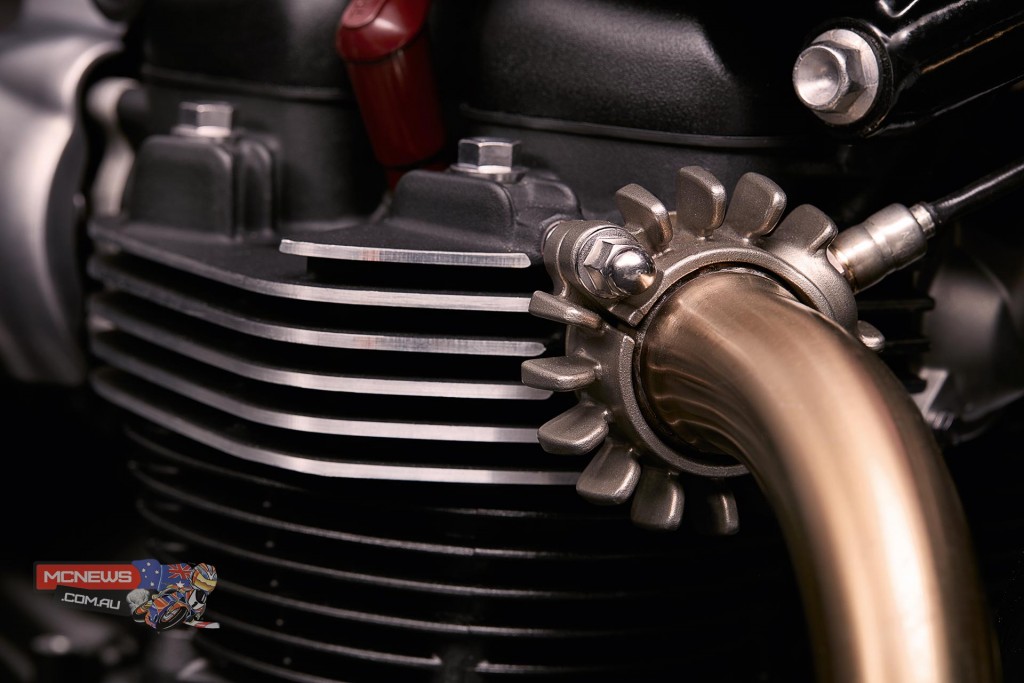
I know this wasn’t a fashion shoot but I have been fielding a few questions about the jacket I was wearing for this launch. The jacket is from French firm Segura, distributed in Australia by Ficeda Accessories. The helmet is part of Bell‘s retro range, as distributed by Monza Imports, and the boots are Icon, who have a great range of street riding boots available through Gas Imports.
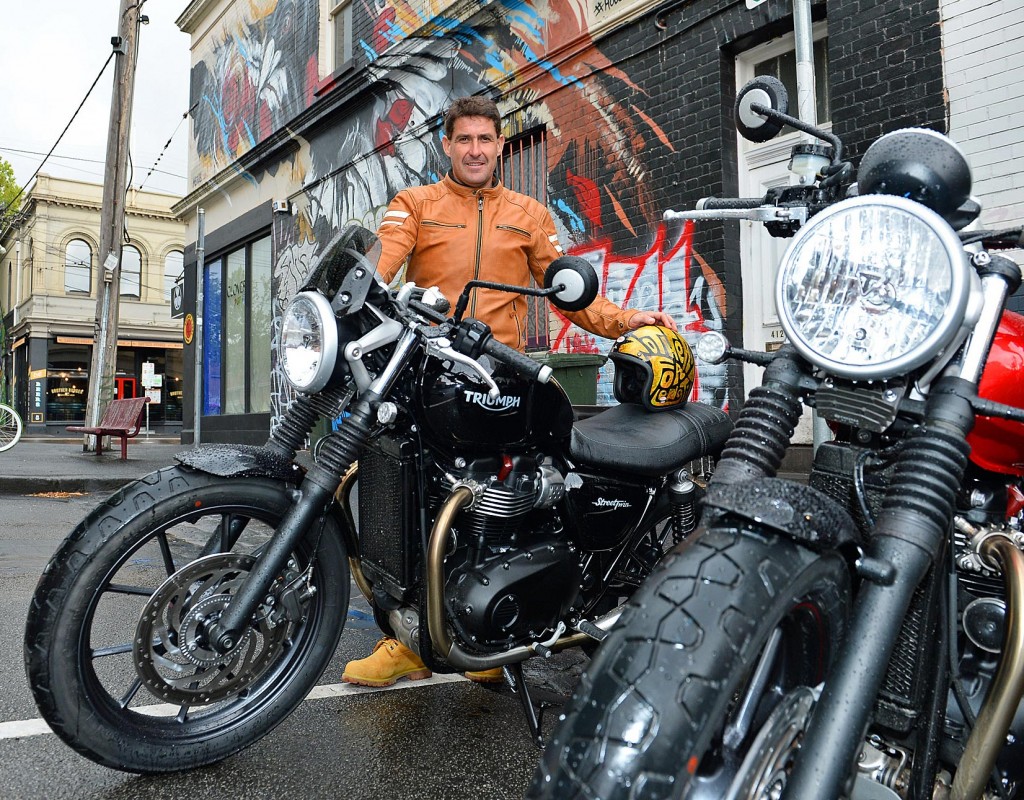
‘To Find out more about the New Bonneville Street Twin, Triumph’s expansive Accessory range of to book yourself a test ride, visit: http://www.triumphmotorcycles.























